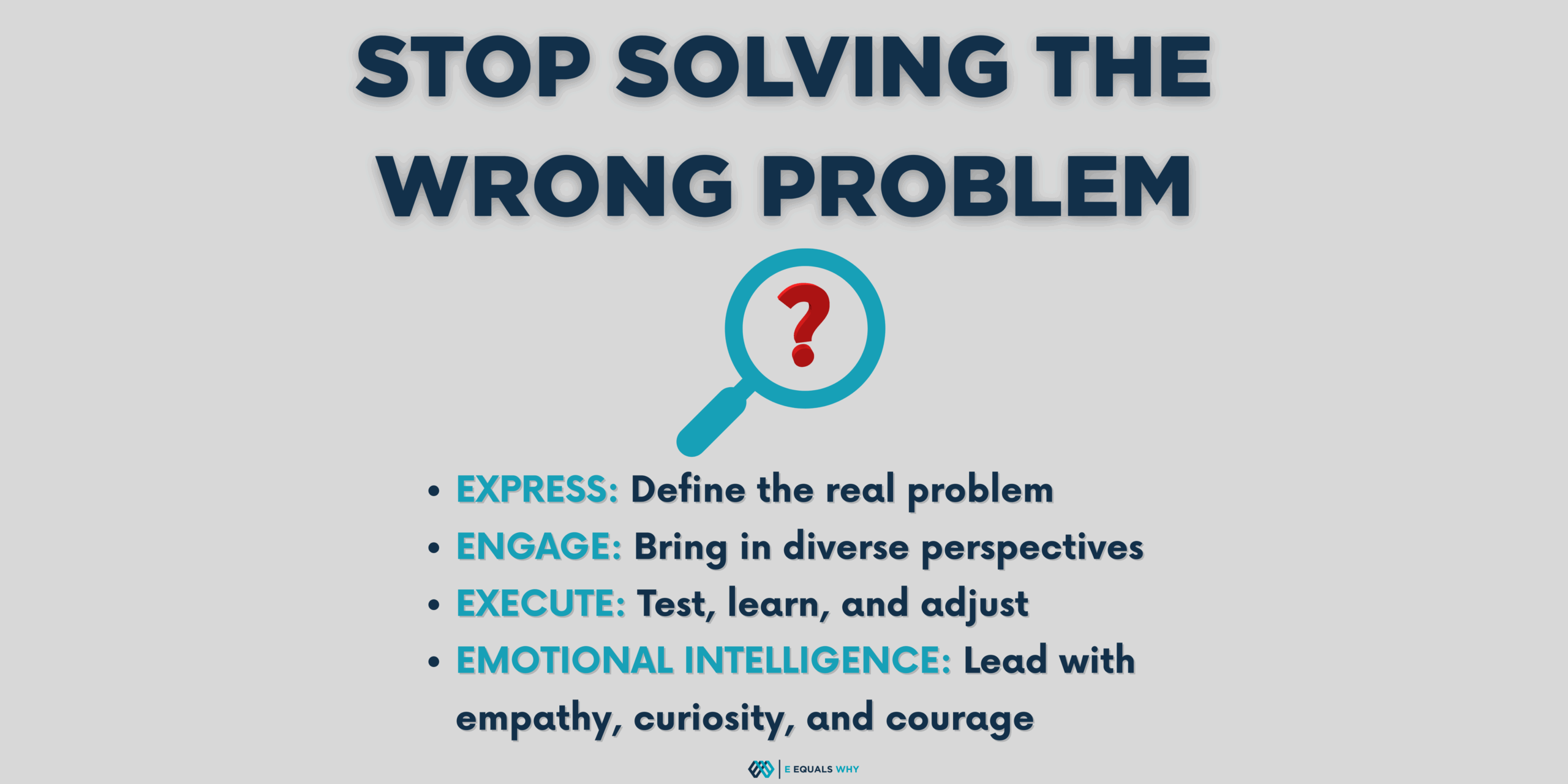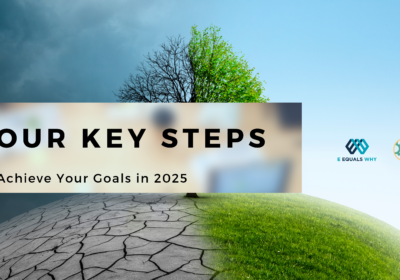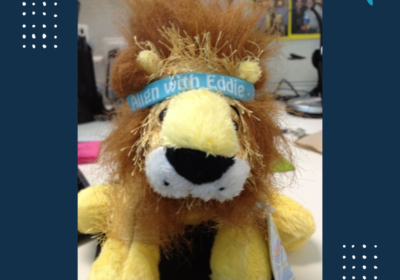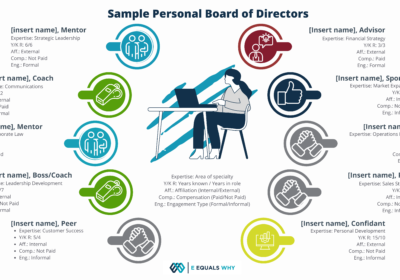Why problem-solving starts with slowing down and getting honest about what’s broken
In leadership, you’re expected to solve problems.
But here’s the catch:
If you’re solving the wrong problem, you’re wasting time, draining resources, and eroding trust.
It’s easy to get swept up in the chaos—metrics drop, projects stall, customer complaints rise—and we rush to fix what’s right in front of us. But reacting to symptoms without identifying root causes? That’s not leadership. That’s whack-a-mole.
And we don’t need more moles.
We need better questions.
Real Leadership Starts with Clarity
The best leaders don’t default to reaction mode.
They pause. Ask better questions. Challenge their own assumptions.
Before you fix anything, you have to define what’s really broken. And I mean really. Not just what’s visible on the surface—but what’s actually driving the dysfunction.
Quick Story: Ketchup, Fridges, and Fresh Perspectives
I love this story because it’s such a simple reminder of how our perspective shapes our problem-solving:
Someone’s cooking and realizes they’re out of ketchup. They ask a few friends what to substitute, and the answers vary wildly.
• One suggests BBQ sauce.
• Another? Tomato paste and vinegar.
• Someone else says soy sauce and sugar.
Why the difference?
Some store ketchup in the fridge. Others in the pantry.
Different lived experiences = different assumptions = different solutions.
Lesson?
Before you solve, step back. Bring in perspectives. Question assumptions. Define the problem clearly—and you’ll get better answers.
A Tale of Two Teams
Let’s ground this in something more familiar: a drop in user engagement at a mid-sized tech company.
🟥 One leadership team reacts fast.
They blame marketing, cut the budget, and push the dev team to launch new features ASAP. No data. No collaboration. Just pressure.
The result? Chaos. Burnout. Poor product updates.
And worst of all—engagement continues to fall.
✅ Another leadership team takes a different approach.
They pause. Pull in voices from product, marketing, and customer success. Analyze user data. Look at feedback trends.
They learn that users are confused by the interface—not uninterested in the product.
With aligned insights, they revamp the UI, launch a targeted campaign, and support users through the changes.
Engagement rebounds. Morale improves. Customers feel heard.
Same challenge. Two radically different outcomes.
The difference? One team solved the real problem.
Use the E3 Approach to Solve Smarter
At E Equals Why, we believe problem-solving doesn’t have to be guesswork or gut instinct.
That’s why we use the E3 Leadership Code—a repeatable framework that helps leaders pause, analyze, and act with purpose.
Here’s how it works:
1. EXPRESS: Define the Real Problem
• What’s happening?
• What’s the impact?
• What would great look like?
This is where most people go wrong. They stop at what’s visible and miss what’s underneath. Go deeper. Ask “why” at least five times. Look at patterns. Pull the thread until you find the knot.
2. ENGAGE: Bring in Diverse Perspectives
You don’t have to solve it alone—and you shouldn’t.
Ask:
• Who sees this differently?
• What voices are missing?
• How can you create a safe environment so people speak honestly?
Don’t problem-solve in isolation. Great solutions come from shared understanding. Make space for dialogue, not just direction.
3. EXECUTE: Test, Learn, and Adjust
Don’t chase silver bullets. Build solutions that evolve.
• Brainstorm and evaluate options (cost, feasibility, impact).
• Set clear roles and responsibilities.
• Launch small where possible—and listen to the feedback.
• Build a plan. Communicate it clearly.
• Monitor, measure, and refine.
Excellent execution is iterative. It’s not about perfection, it’s about progress.
4. EMOTIONAL QUALITIES: Lead with Emotional Intelligence
This is where your leadership shines.
Problem-solving requires more than logic. It requires emotional intelligence—qualities like:
• Curiosity to ask deeper questions
• Empathy to understand real experiences
• Courage to sit in discomfort long enough to get it right
• Gratitude and empowerment to bring others along
When you combine EQ with the E3 formula, you don’t just solve problems; you build alignment, momentum, and trust.
Final Thought: Slow Is Fast
The best leaders don’t rush to act.
They reflect before they react.
They listen before they lead.
They diagnose before they prescribe.
In a world obsessed with speed, it takes real courage to slow down.
But when you do?
You stop solving the wrong problems—and start solving the right ones.
Want to Build These Skills?
Join our upcoming E3 Leadership Bootcamp—designed for leaders ready to master practical skills like problem-solving, strategic thinking, and emotionally intelligent leadership.
🧭 Learn more and register here: BOOTCAMP REGISTRATION
Because the best leaders don’t just fix things.
They lead better—every step of the way.




